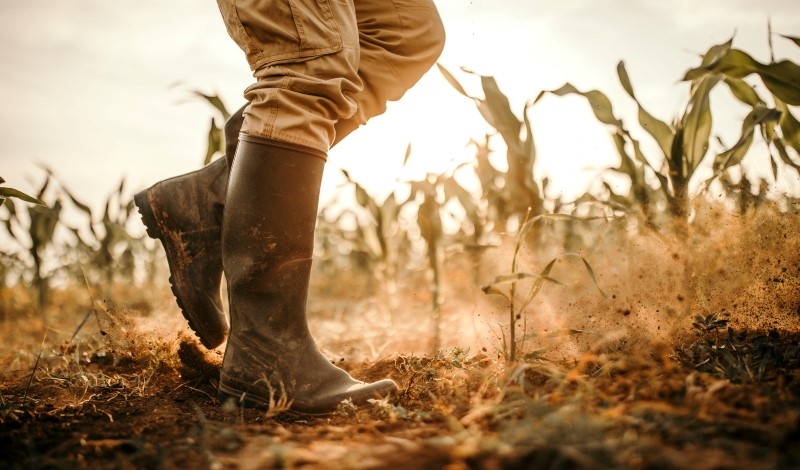
Scholars debate making changes to child labor regulations to improve protection of youth.
Citing a 69 percent increase in child labor violations by companies since 2018, the U.S. Department of Labor and the U.S. Department of Health and Human Services (HHS) announced in February the creation of an interagency task force to ramp up enforcement of child labor laws. This announcement came days after a report by The New York Times revealed that children, many of whom are immigrants, are being illegally employed in businesses across the country.
Meanwhile, some states have recently signaled interest in rolling back child labor protections by introducing bills that would lift restrictions on hazardous work, apply a subminimum wage to youth, and extend working hours.
These contradictory developments at the federal and state levels of government have ignited a debate about the extent to which child labor laws protect children or, alternatively, impede the right to work and obstruct parental choice.
At the federal level, the Fair Labor Standards Act of 1938 (FLSA) and subsequent Labor Department regulations govern the permissible conditions for child labor. The Wage and Hour Division of the Labor Department enforces these requirements.
Under the FLSA, the minimum age for employment has been set at 16 years. This means that 16-year-olds can work unlimited hours in any occupation, except for those that the Secretary of Labor has declared hazardous. 14- and 15-year-olds, by contrast, may work only outside the school day and for limited hours. Children under 14 may not work in non-agricultural occupations, with exceptions for certain jobs such as acting.
Agricultural occupations face fewer child labor restrictions under federal law, as children as young as age 10 may work on farms.
Proponents of stricter child labor regulations argue that current rules do not deter businesses from employing children. At present, the maximum civil penalty for a violation is $15,138 per child, which Labor Department and HHS argue is “not high enough to be a deterrent for major profitable companies.” Furthermore, the use of third-party staffing agencies allows companies to sidestep accountability.
Some advocates for stronger regulations also criticize the FLSA’s dearth of protections for children working in agriculture, who face risks of musculoskeletal injury, heat stress, and pesticide exposure. Experts emphasize that, under the current regulatory framework, children in both agricultural and non-agricultural occupations face injury, endure exploitation, and experience obstacles to education, including a higher rate of dropping out of school.
Supporters of loosening regulations argue that the greater threat to youth stems from the loss of their economic potential, because work restrictions deprive them of formative experiences and skill development. Some proponents of deregulation also argue for the suspension of regulations, such as work permits, on the grounds that they obstruct parental choice. Furthermore, some commentators view younger workers as a solution to the national labor shortage. Because youth may work for lower pay and be less likely to unionize, employers might favor hiring teenage workers.
Some members of Congress have urged the Labor Department to use the FLSA to block shipments from factories found to violate child labor laws. To reduce or eliminate child labor altogether, experts have proposed implementing social protection programs such as cash transfers, which provide support to economically vulnerable households. Experts have also suggested monitoring supply chains using blockchain.
In this week’s Saturday Seminar, The Regulatory Review summarizes work of scholars and advocates who offer different perspectives on how policymakers should modify child labor regulation in the best interest of children.
- In a report issued by the Economic Policy Institute (EPI), two EPI researchers, Jennifer Sherer and Nina Mast, argue that feeble child labor protections are failing children at both state and federal levels. Sherer and Mast explain that over the past two years at least ten states have even chosen to weaken child labor protections, pushed by the influence of industry groups and in asserted contradiction of federal standards. To protect children from harm and exploitation, Sherer and Mast recommend that Congress and states enact policies that strengthen labor protections by protecting the right to organize, improve enforcement mechanisms through increased funding, reform immigration policy to protect migrant youth, and remove exemptions for employment in agriculture.
- The FLSA should protect children who work in agriculture, explain Taylor J. Arnold of Wake Forest School of Medicine and several coauthors in a study published in 2021 in the journal New Solutions. Drawing on interviews and surveys of Latinx child farmworkers in North Carolina, Arnold and coauthors found that many of the child workers surveyed believed they could “get used to” pain and sickness resulting from workplace hazards such as pesticides, excessive heat, and muscle soreness. The authors advocate regulations that address structural barriers, including harmful immigration policies, that prevent Latinx youth from accessing health care, reporting injuries, and choosing employment.
- In an article in Globalizations, Emily Reid-Musson of St. Francis Xavier University, Kendra Strauss of Simon Fraser University, and Meaghan Mechler of the University of Guelph explore how rural constituent ideologies about work ethic relate to gaps in federal child labor rules for agriculture. Reid-Musson, Strauss, and Mechler argue that geographical imaginations about work ethic are deeply held within agrarian communities. These ideas are sometimes mobilized, Reid-Musson, Strauss, and Mechler explain, to hamper regulatory efforts. Following opposition from the farm sector in 2012, the Labor Department withdrew a proposal to limit hazardous work activities performed by youth in agriculture. As a result, Reid-Musson, Strauss, and Mechler highlight that child agricultural labor rules under the FLSA have remained stagnant since the 1960s.
- In an article published in the University of Pennsylvania Law Review, attorney Marina A. Masterson criticizes the lack of labor protections for child social media entertainers, who she terms “kidfluencers.” Although these children represent an $8 billion industry and generate advertising revenue by creating content on their social media platforms, states have not enacted social-media-specific labor protections. Due to their earning potential, however, kidfluencers risk the loss of privacy, school absences, and financial exploitation, Masterson argues. To ensure that children are protected, Masterson recommends that state policymakers enact financial protections for children, such as by requiring the use of blocked trust accounts where 15 percent of children’s wages would be deposited until they turn 18. In addition, Masterson suggests that regulators should balance protecting children with affording parents the right to raise their children free from government intervention.
- Alli Fick and Haley Holik of the Foundation for Government Accountability (FGA) recommend in a white paper that state regulators should uphold parental decision-making by eliminating youth work permits. Youth work permits require teenagers to obtain permission from a designated officer in their school district before being eligible for employment. Fick and Holik argue that, without the obstacle of these permits, teenagers could help solve the national labor shortage by providing a pool of employees to struggling businesses. Furthermore, Fick and Holik assert that teenagers want to work. In 2021, 32 percent of teenagers were employed, representing a record high. Because existing safety regulations protect teenage workers, parents should be the ultimate deciders of whether their teenager can work, Fick and Holik argue.
- Information campaigns on goods made using child and forced labor can be effective in reducing exports of those goods to developed countries, finds Margaryta Klymak of the University of Oxford. In an article in World Development, Klymak investigates the efficacy of naming-and-shaming as a means to reduce imports of child labor, focusing on the List of Goods Produced by Child Labor or Forced Labor published by the U.S. Labor Department. Klymak examines how the public reacts to information about labor rights violations in the production of goods and how shifts in consumer sentiment can affect aggregate trade flows between countries. She also provides information about child and forced labor violations for specific goods. Klymak’s findings support concerns that the Labor Department’s list yields only statistically significant results for goods produced in the manufacturing sector, with no effects observed for agricultural or mining products. Klymak calls for further research into whether such a campaign reduces the number of child workers in different geographical areas.
The Saturday Seminar is a weekly feature that aims to put into written form the kind of content that would be conveyed in a live seminar involving regulatory experts. Each week, The Regulatory Review publishes a brief overview of a selected regulatory topic and then distills recent research and scholarly writing on that topic.



